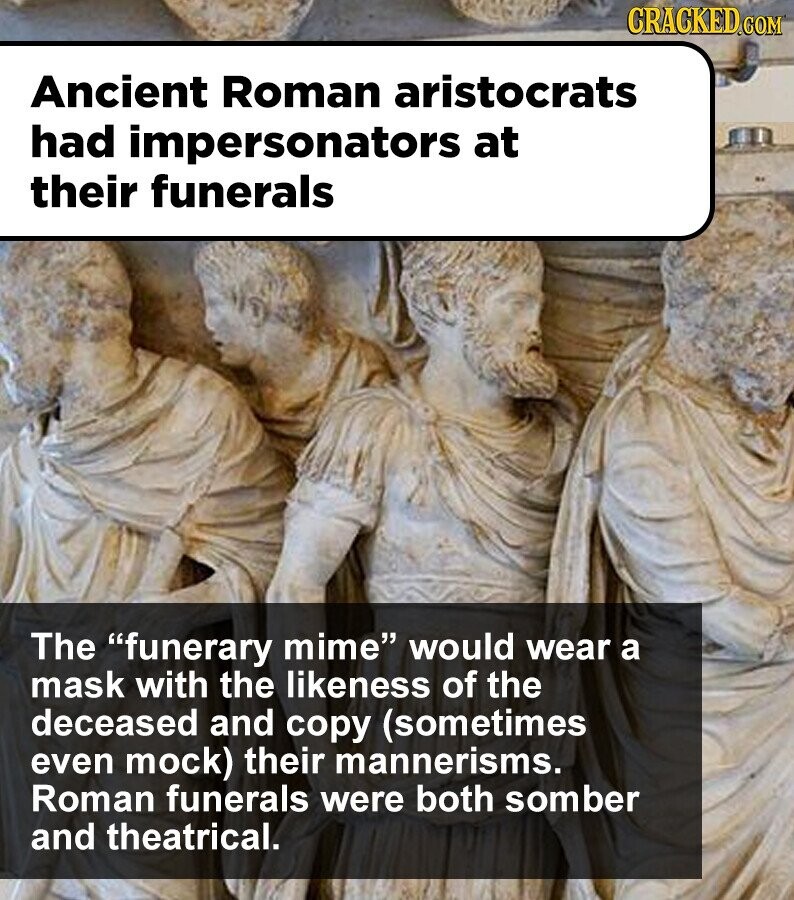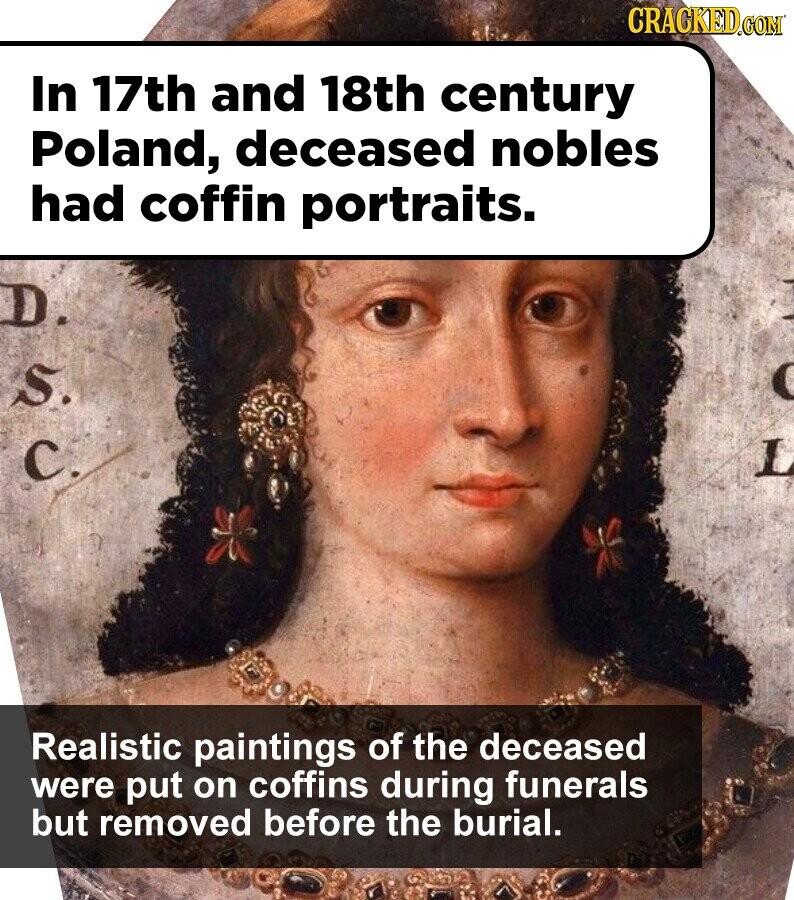12 Historic Tidbits About The Afterlife & Death

What happens when we die? Until Cracked gets an exclusive interview with the Big Guy Upstairs, we, unfortunately, can’t answer that question. But it’s a question we assume has been plaguing humans since humans have had questions. We may not know anything about the great unknown, but we do know a little about what people have historically thought about death …and whatever, if anything, comes next.
Previously we’ve covered attempts to prove the afterlife (spoiler: they all failed) and as far as we know there’s been no successful update since then. Faith in an afterlife can be a beautiful way of imagining reuniting with departed loved ones and incentivize not being a douchebag, but, especially with the added perspective of examining beliefs of ancient religions, it can also bring out the truly weird and disturbing imaginations of people.
Here’s a round-up of interesting facts about the history of death, funerals, and the beliefs of the afterlife for your entertainment and/or future belief system.
Ancient Roman aristocrats had impersonators at their funerals

In Ancient Greece, it was believed that if you cut the feet off the corpse, it couldn't rise to haunt you.

Source: Oxford Classical Dictionary
Ancient Egyptians believed the heart would be weighed by the gods

Embalmers would secretly cut out the hearts of commoners' mummies so the elite didn't have to share the afterlife with them

Source: USA Today
Neanderthal Funerals

Source: Scientific Reports
Mesopotamians believed the dead lived under the earth, drinking from muddy puddles and eating dust

Source: World History Encyclopedia
In 17th and 18th century Poland, deceased nobles had coffin portraits.

Source: Ikon
In Korea, figurines were buried with people to help them in the afterlife

Source: New York Times
The first emperor of China had a terracotta army buried with him

Source: ArtNet
Early Christians believed this world would become a restored Eden in their lifetimes

Source: Washington Post
In Ancient Mexico, dogs were sacrificed to help guide their deceased owner's soul to the underworld.

Source: National Geographic and Man

Source: PEW